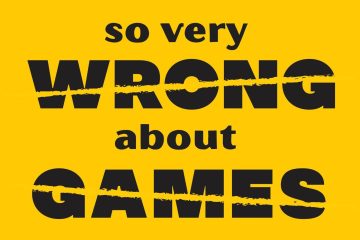Table of Contents
- Exploring the Fundamentals of the Telephone Game Communication Activity
- Enhancing Listening Skills Through Engaging Play
- Strategies for Facilitating Effective Group Dynamics
- Overcoming Common Misunderstandings in Communication
- Adapting the Telephone Game for Different Age Groups and Settings
- Q&A
- To Conclude
Exploring the Fundamentals of the Telephone Game Communication Activity
The Telephone Game, often played in social settings, is not just an entertaining pastime but also a valuable tool for understanding communication dynamics. Players sit in a circle, where one begins by whispering a message into the ear of the person next to them. This process continues until the message has traveled full circle and is revealed aloud, often with amusing results. The excitement of this game lies in how messages can morph through each retelling, illustrating the nuances and potential pitfalls of verbal communication.
Key elements that make this activity effective include:
- Listening Skills: Participants must pay careful attention to accurately convey the message, enhancing their auditory skills.
- Memory Recall: The game challenges players to remember intricate details, emphasizing the importance of retention in communication.
- Interpretation Variability: As the message passes through different lenses, it showcases how personal experiences shape understanding, often leading to unexpected interpretations.
To deepen the experience, consider variations such as including visual or written messages at the outset. These methods allow players to compare the initial and final outputs more visibly, opening discussions on clarity and context in communication. For those looking for structured reflection after the game, a simple table can highlight the original message versus the final outcome, sparking meaningful conversations about miscommunication and its implications.
| Original Message | Final Message |
|---|---|
| The quick brown fox jumps over the lazy dog. | The quick brown box jumps over the crazy frog. |
| Let’s meet at the coffee shop at 3 PM. | Let’s meet at the office at 3 AM. |


Enhancing Listening Skills Through Engaging Play
Playing games is an excellent way to enhance listening skills, especially through activities that require players to pay attention and communicate effectively. One such activity is the classic telephone game, which can be a fun and engaging method to teach participants the importance of clear communication and active listening. In this game, a message is whispered from one participant to another, often resulting in hilarious distortions by the time it reaches the last person, illustrating just how easily information can be misinterpreted.
The mechanics of the game are simple yet effective in building those vital listening skills. When participants focus on hearing and accurately relaying a message, they practice the following skills:
- Active Listening: Participants learn to concentrate on the speaker, ensuring they correctly interpret the message.
- Memory Retention: The short time frame for relaying messages sharpens memory skills as players must remember details accurately.
- Adjusting Communication Style: Players may need to adapt their speaking and listening techniques based on who they are communicating with, creating a tailored interaction experience.
To further enhance the learning experience, consider incorporating variations of the game or follow-up discussions. For example, here’s a simple table outlining different versions of the telephone game you can play:
| Game Variation | Description |
|---|---|
| Whisper Challenge | Players wear noise-canceling headphones while trying to guess phrases from lip movements. |
| Three Words | Only three words can be used in the message, making it a test of clarity and succinctness. |
| Theme Messages | Messages must relate to a specific theme, such as animals or food, encouraging creativity. |
Encouraging dialogue after each round can also deepen understanding. Discuss which messages changed the most and why, allowing for insight into the dynamics of communication. By engaging in such activities, participants not only develop their listening skills but also weave a fabric of trust and cooperation, enhancing their overall communication abilities in everyday interactions.


Strategies for Facilitating Effective Group Dynamics
To foster effective communication and enhance group dynamics during the telephone game activity, it’s crucial to create a supportive environment that encourages participation from all members. This can be achieved by establishing ground rules that promote active listening and respectful interaction. Encourage participants to focus on the message being passed, rather than getting caught up in personal distractions. Consider the following strategies:
- Start with small groups: Reducing the number of participants in each group can minimize misunderstandings and ensure that everyone has an opportunity to contribute.
- Encourage clarity: Remind participants to articulate their messages with clear diction and pace, making it easier for others to comprehend and relay the information correctly.
- Reinforce active listening: Emphasize the importance of listening attentively without interrupting, which can greatly enhance the accuracy of communication.
Another effective strategy is to conduct a debrief session after the activity. This allows participants to reflect on their experiences, discuss what went right or wrong, and understand the importance of communication in teamwork. During this session, consider using a simple table to summarize insights gained from the activity:
| Aspect | Insight |
|---|---|
| Message Clarity | Clear messages lead to better retention and understanding. |
| Listening Skills | Active listening improves message accuracy significantly. |
| Team Collaboration | Working as a team boosts confidence and reduces anxiety. |
Lastly, it can be beneficial to incorporate feedback mechanisms during the activity. Encourage participants to share their thoughts on the effectiveness of the communication methods used. This feedback can foster an atmosphere of continuous improvement and help identify personal communication styles, which is essential for further enhancing group dynamics. Utilize feedback forms or open discussions to gather insights on how communication can be optimized in future activities.


Overcoming Common Misunderstandings in Communication
Incorporating the telephone game into communication training can help participants experience firsthand the nuances of conveying messages. This activity showcases how easily information can become distorted as it passes from one person to another. By actively participating, individuals can recognize the importance of clarity and the need to ask questions for clarification. A simple sentence can morph into something entirely different when relayed through a sequence of individuals, illuminating the pitfalls of assumptions and incomplete information.
Furthermore, the telephone game emphasizes active listening, which is often a neglected aspect of communication. When participants focus intently on the message being shared, they can better retain the information and subsequently relay it accurately. This highlights listening techniques such as maintaining eye contact, nodding, and summarizing what has been said. These practices serve to reinforce the effectiveness of communication and can lead to more profound interpersonal connections.
After completing the activity, it’s beneficial to engage in a group discussion about the experiences and outcomes observed. Consider these points during the debriefing session:
- How did the message change as it traveled?
- What strategies helped you to convey the information accurately?
- What barriers did you encounter that made communication difficult?
| Key Lesson | Application in Real Life |
|---|---|
| Clarity is Crucial | Strive for straightforward messages in both verbal and written communication. |
| Active Listening | Engage with the speaker and validate their message before responding. |
| Feedback Loops | Encourage questions and confirmation to ensure mutual understanding. |


Adapting the Telephone Game for Different Age Groups and Settings
Adapting the telephone game for various age groups and settings can significantly enhance the learning experience and foster effective communication. For young children, simplifying the language used in the messages can make the game more accessible and entertaining. Using relatable themes, such as favorite animals or fairy tales, engages their imagination and excitement. Keeping groups small ensures that each child gets a turn without losing interest, promoting a fun and interactive environment. Here are some ideas to tailor the game for younger audiences:
- Use short and simple phrases.
- Incorporate hand gestures or body movements.
- Include visual aids, such as pictures or drawings, to illustrate messages.
When adapting the telephone game for teenagers, it’s essential to incorporate more complex messages that challenge their communication skills and critical thinking. Teenagers thrive in collaborative settings where they can express their opinions and creativity. Introducing themes related to current trends or popular culture can also capture their interest. Consider these adjustments for older participants:
- Use references from music, movies, or social media.
- Encourage group discussion before passing the message.
- Introduce a competitive element, such as timed rounds.
For adults, the telephone game can be transformed into a team-building exercise or a fun icebreaker during meetings. The focus can shift to enhancing professional communication skills, such as clarity and brevity. Utilizing workplace-related messages or scenarios encourages team members to think critically about their communication styles. Here’s a simple approach to tailor the game for an adult setting:
| Setting | Message Type | Goal |
|---|---|---|
| Workshops | Industry-related phrases | Improve clarity |
| Social gatherings | Light-hearted jokes | Encourage bonding |
| Training sessions | Case studies | Enhance teamwork |
Q&A
Q&A: Understanding the Telephone Game Communication Activity
Q: What is the Telephone Game? A: The Telephone Game, often played in groups, is a communication activity where participants sit in a circle and take turns whispering a message to the person next to them. The goal is to see how much the original message changes by the time it reaches the last participant. It’s a fun way to explore how communication can be altered through misunderstanding or mishearing.Q: What is the purpose of the Telephone Game? A: The primary purpose of the Telephone Game is to highlight the challenges of effective communication. It illustrates how easily misunderstandings can occur, even in seemingly simple exchanges. It’s also a great tool for team-building and encouraging active listening among participants.Q: How do you set up a Telephone Game activity? A: To set up the game, follow these simple steps: - Gather a group of at least 5-10 participants.
- Have them sit in a circle to ensure everyone can hear each other but not directly overhear the whispers.
- Prepare a simple phrase or message that can be easily distorted.
- Start by whispering the message to the first person and proceed from there until the last participant hears it.
- compare the original message with what the last person heard for a fun reveal!
- Silent Version: Participants draw the message instead of whispering, switching the focus from auditory to visual communication.
- Telephone Pictionary: This mixes telephone and drawing. Each person draws what they heard from the previous player without sharing the message aloud.
- Theme-based Telephone: Select a particular theme (like movies or books) and use related phrases to add an extra layer of fun.
- The Importance of Clarity: Clear communication is vital to successfully conveying a message.
- Active Listening: Players must truly listen to what is being said to pass it accurately.
- Adaptability: Sometimes, you need to adapt your communication style based on your audience.
- Empathy: Recognizing that everyone hears and interprets things differently can foster greater patience and understanding in real-world communications.
- Mix Up Groups: Shuffle participants between rounds to encourage networking.
- Add a Competitive Element: Time how long it takes for messages to travel and reward the fastest team.
- Incorporate Technology: Use microphones or phone apps to add a modern twist to the classic game.




0 Comments